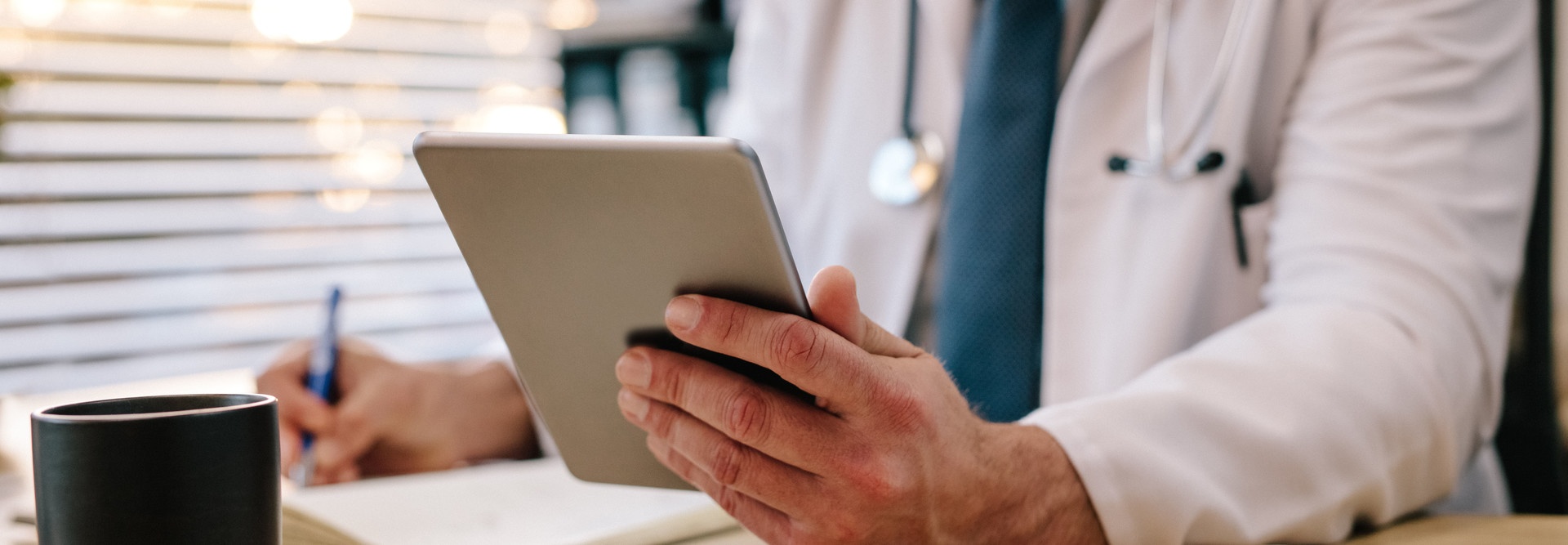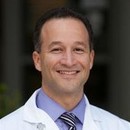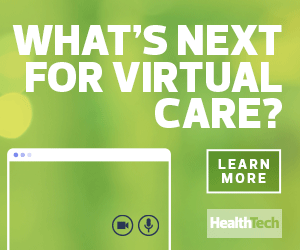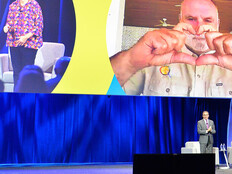Now, using the app, two care providers and a parent stand outside a patient’s room (with participants spaced 6 feet apart), passing a video cart back and forth to engage with other members of the team located remotely.
Dr. Patrick Barth, a pediatric otolaryngologist at Nemours/Alfred I. duPont Hospital for Children in Wilmington, Del., recently performed an airway procedure on a child. From a satellite clinic, Barth was able to use the same rounding technologies for follow-up visits as the child recovered in intensive care.
“I got to participate in virtual rounds with the attending physician and team, all in a virtual setting — in addition to having the ability to see the mom and the child, and take care of them in the same fashion I would have if I had been present,” says Barth.
Some virtual rounding efforts, however, involve an in-person element. At the University of Louisville School of Medicine in Kentucky, physicians are relying on wearables to help remotely deliver care to senior care settings during the coronavirus crisis.
By wearing a pair of Vuzix M400 smart glasses and connecting through Zoom, an onsite nurse practitioner can serve as the “eyes” of a remote physician during rounds.
“They’re providing a view for a remote expert,” says Dr. R. Brent Wright, the school’s associate dean for rural health innovation. “Let’s say they see a rash. Now, you can describe a rash, but if you can show that rash through video, you can move quickly to developing a treatment plan.”
Improving the Patient Experience Starts with a Personal Connection
Many hospital patients are using telemedicine services for the first time due to the coronavirus crisis, says Wright. He predicts these experiences will contribute to the explosive growth and acceptance of telehealth — and that new workflows developed during the pandemic will endure.
Despite the circumstances, “they’re having a wonderful experience,” says Wright, adding that he expects to see a wider use of smart glasses in healthcare settings. “We’re going to find that this is a very valuable tool going forward.”
Dr. Michael Usher, an assistant professor of medicine at the University of Minnesota, is conducting research on the effectiveness of virtual rounding. He says the effort is a proven way to reduce PPE use, and it has helped patients being treated for COVID-19 feel less isolated.
Still, existing virtual rounding systems can have limitations for patients who don’t speak English or lack experience with technology. “The biggest lesson is to take into consideration usability and accessibility,” Usher says.












